How to Choose the Best Mulch for Your Landscape
Whether preventing weeds or beautifying a garden bed, follow this guide to pick the best mulch for your garden.
While mulching may seem like a simple part of gardening, there are a few must-knows about the different mulches you can use and the benefits of each. Though shredded bark might immediately come to mind, you should consider other types for the best mulch for your garden.
Knowing when to add mulch to your planting beds and how much to use is essential for keeping all your plants healthy. Remember these tips as you plant your spring garden throughout the year, especially if you add new beds or landscaping.
Shop This Story
Benefits of Mulch
There are some advantages to adding mulch to your garden. In the summer, mulch helps the soil hold moisture, so you don’t have to water as often. Soil also tends to dry out faster and harden in the hot sun. Mulch will help protect the ground from baking in direct sunlight and keep your plants happy.
Mulch also prevents weeds. Adding it to your planting bed will block light from reaching the soil, keeping many weed seeds from sprouting. Adding a thick layer of mulch will ensure the weeds never see the light of day.
Over time, some types of mulch, made from organic materials (produced by or part of a living thing), break down and increase your soil’s structure and fertility. This is especially true with compost used as a mulch because its nutrients will promote soil organisms and fuel plant growth. Plus, a layer of mulch can help fight climate change because covered soil holds onto carbon instead of releasing this greenhouse gas into the air.
Tip: Be Moderate
While an even layer of mulch is ideal, don’t overdo it. The best depth for a mulch layer is 2-4 inches. Any deeper, and it can be difficult for oxygen to reach the soil, which can cause your plants to suffer.
When to Add Mulch
Every spring, check on the mulched areas of your garden and add more if the layer is starting to get thin. If you’re mulching a large space for the first time and not just touching up a few garden beds, you should schedule a delivery from a bulk supplier. It’ll be less expensive than buying a ton of bagged mulch from your local garden center, and you won’t have to haul all those bags in your vehicle to your yard either.
Check on your mulch again when late fall rolls around, and reapply if needed. In the winter, a good layer of mulch acts as insulation, helping to regulate the soil temperature. This reduces stress on plant roots and prevents frost heaving (where smaller plants are pushed out of the ground) as it repeatedly freezes and thaws. Make sure the ground has frozen a few times before adding mulch as a protective layer for the winter.
Best Mulch for Your Garden
Depending on your landscape design and what you’re planting, these choices are the best mulch.
Shredded Bark
Shredded bark is one of the most common and least expensive types of mulch. It comes from a variety of sources, including cedar trees. Shredded bark is the best mulch for slopes, breaking down relatively slowly. As a bonus, some shredded bark mulches are byproducts of other industries and are considered environmentally friendly. Check the mulch packaging for more information.
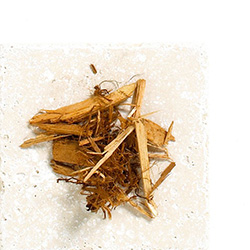
Tip: Keep Plants Healthy
Shredded bark can take up some nitrogen from the soil as it decomposes. Adding some organic fertilizer can help keep your plants healthy if you have poor soil.
Straw
Straw mulch has a beautiful golden color that looks great in the garden. It’s also a bit slower to break down than leaves or grass clippings. Some gardeners like smaller, shredded straw pieces, while others prefer larger ones. Straw is classically used in more utilitarian gardens, such as vegetable gardens and around strawberry plants. Straw does a great job of keeping mud off of your edibles.
Tip: Be Weed-Free
Make sure the straw is free of weed seeds. Otherwise, it can cause more weeds than it prevents. (Oat straw is often particularly weedy.)
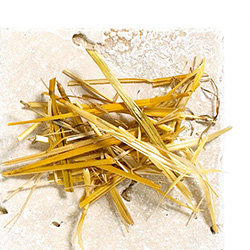
Compost
Compost looks like soil, except it’s darker, so it sets off plants nicely. This mulch material breaks down quickly but adds to your soil structure the most rapidly. Plus, it’s inexpensive; you can create rich compost for free, even from grass clippings and leaves. Ensure your compost bin heats up enough to kill any weed seeds. Many municipalities give away compost as well. Before spreading it all over your garden, test compost on a small area to check for weed seeds.
Shop This Story
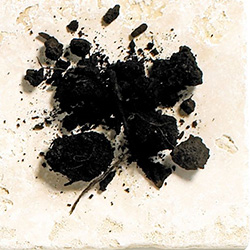
Pine or Cedar Bark Chips
Often labeled as bark nuggets, these chipped pieces of bark are slower to break down than shredded bark, so this mulch doesn’t stay in place as well as others. As a result, it’s not the best mulch for slopes or other areas where heavy rain may wash it away; the chips tend to float and take off like boats. The nuggets are available in various sizes; the bigger the nugget, the longer it lasts
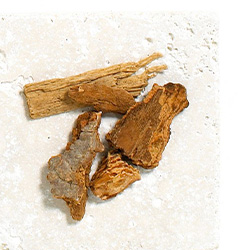
Stones and River Rocks
Rocks tend to be more expensive than organic mulches. But because they’re inorganic materials, river rock, stones, and landscaping pebbles don’t break down, so they don’t need to be reapplied yearly. However, it also means they don’t improve your soil over time.
Take caution when using stone as mulch because stones get hot in the sun. Stones are often used in cacti and rock gardens. Cover the soil first with sheer landscaping fabric if you use rocks and stones as mulch in an area where plants won’t grow, such as under a deck. This will help prevent weeds from growing up through the rock.
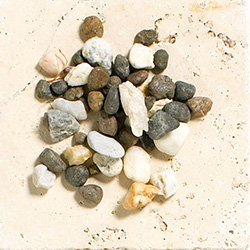
Mulch Your Lawn, Too
Gardens aren’t the only outdoor area that benefit from mulching. Grass mulch can help keep your lawn healthy and looking its best. To make grass mulch, grass is cut into easily absorbed grass clippings that are spread across your lawn. There are several benefits to doing this:
• 100% natural
• Returns valuable nutrients and organic matter to the soil
• Helps prevent weeds
• Conserves moisture during times of drought (so you can water less)
The easiest, most effective way to grass mulch is by adding a mulching kit to your mower, like the John Deere MulchControl™ Kit with One-Touch Technology. With the push of a button, you can mulch whenever you want, making it perfect for regular, weekly, or biweekly mowing.


